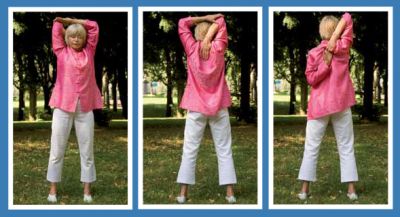Seasonal Qigong – ‘Living in tune with nature’s changes’
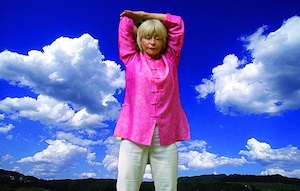
Seasonal Living is something that would never have been talked about 250 years ago. We got up when it was light, went to bed when it was dark, ate local produce when it was in season and joined in with the energy and the festivals of the local community. So that we were totally in tune with the energy within ourselves and it’s relationship to natural cycles.
However, now we can shop, eat, bank and sit in front of our computers 24 hours a day. We pay no attention to our energy fluctuations and, through the use of electric light, continue to work till late into the night, and at the same pace throughout the year. Often in high rise buildings far removed from the natural world.
For thousands of years, ancient cultures have studied the two-way communication between man and nature cycles and how natural laws work in relationship to human physiology. For example, the phases of the moon and its influence on the fluids of the body, and how the cycles of day and night influence activity and rest. The changes of the seasons also affect our internal conditions and mental and emotional needs. We are a part of nature and therefore part of its changes and once we cultivate an awareness of these changes and work in harmony with them, we can see how vital and strong they really are and how this can influence our well-being and motivation on every level, and are the essence of personal development and healing.
As we open our minds and look at how the world works, we can see that the body also has homeostatic mechanisms for internal balancing, just as nature does. With too much internal (personal) and external (social) tensions we can damage and create imbalances in these systems, thus draining our vital energy and working against natural energy flows
Most of us are affected by these ever-present individual and social pressures, yet we don’t necessarily know how to properly re-establish a balance, and how to work with these cycles in order to put energy back into our systems. So we just become more depleted or victims of fatigue and tensions. So rather than getting caught up in complicated scientific solutions, it can be simple changes in exercise, diet and lifestyle that can have the most profound effect on our health, self-esteem and well-being.
Ancient peoples have understood and used the concepts of the five seasons for thousands of years not only for maintaining health but for making the most on the different qualities of energy within and around themselves. In so doing continually balanced and maximized their vital life force.
Seasonal Qigong: “Summer”
The energy of summer likes to be more spontaneous, vibrant, active, and expressive and loves disperse its energy. The linked organs are the Heart and small intestine so this class should focus on supporting and balances the cardiovascular system.
The Fire Element: the element of vitality and movement; so we can sharpen our responses with martial art training or faster moves, while at the same time working on training the mind and maintaining a sense of inner calm. (This is depicted in the black and white Yin Yang symbol where there is the black dot within the area of light, symbolising the power of stillness within activity).
An ideal warm in summer should assist in balancing the flow of the Heart and Small Intestine Meridians and include the following:
Particular focus on the following the Heart and Small Intestine
Opening and energizing their associated meridians
Massaging the organs themselves
Performing a movement that restores energy flow to the muscles associated to the relative acupuncture meridians.
Opening and closing the Mu points (points used for testing and balancing specific organs)
The point for the heart is Juque (Great Palace Gate) located on the Ren channel (number 14) on the anterior midline of the body 6 cun (about a hands width) above the navel at the end of the breast bone.
The point for the small intestine is Guanyuan – (Gate to the original) (Ren/CV3) on the midline 3 thumb widths below umbilicus.
(You can also gently massage these points with the tips of the thumb, index and middle fingers)
A simple summer Qigong exercise sequence

A1. Inhale while placing your left hand over your heart point drawing a circle over your head with your right hand – turn the palm outwards as the right hand passes in front of the face by rotating the little finger.
A2. Exhale as you bring the right hand back and down to the right side.
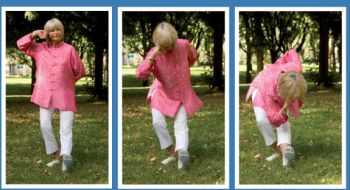
B1. Inhale as you raise your right arm in front of you and stepping the left foot forwards to rest the left heel on the ground (the weight stays in the right leg). Place your left hand behind your back just below the waist, resting on the Yu point for the Small Intestine on the sacrum just above the buttock crease and place the knuckle of your bent right little finger in the indentation in front of your right ear (found when you open your jaw).
B2. Exhale and bend forwards bringing your right elbow down and across towards your left knee (the extended leg).
B3. Step the left foot back and repeat by bringing the left arm around the head and stepping the right foot forwards.
A stretch to open the heart and small intestine meridians
C1. Inhale, draw your right hand above your head, bend the elbow and hold the elbow with your left hand, do not let the head drop forwards. Then extend the left arm out to the left and rotate the left thumb forwards and backward so the whole arm spirals into the shoulder. Then draw the left arm behind you and slide the back of the left hand up between your shoulder blades till the right and left hand meet. (If this is difficult use a tie or a band)
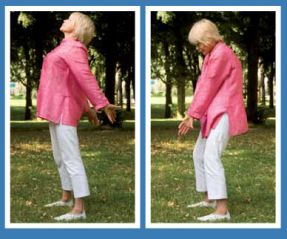
Wild Goose flexes its wings
Research has shown that the health of the heart is dependent on the mobility of the Thoracic spine, this exercise massages the heart and lungs and increases flexibility in the thoracic spine. Focus on the little fingers where the heart and small intestine meridians begin and end.
D1. Inhale while pushing the chest forwards and opening the throat, taking your hands behind your back with the palms facing forwards. Squeeze the shoulder blades trying to bring your little fingers together.
D2. Exhale while moving the centre of the chest backwards and rounding the upper back bringing your chin towards your chest and rotating the wrists in order to bring the backs of your hands and the little fingers together in front of the navel. Repeat these backward and forward movements several times.
Please note: should particular Organs, systems or areas of the body need support you can you a particular seasonal session at any time of the year.
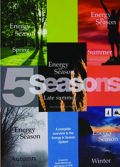
The source material for this retreat comes from a book and trainings inspired by Sue Woodd and Julie Hanson who first met in the mid 90’s Sue a Chi Kung teacher, Shiatsu lecturer and also a lecturer in Traditional Chinese Medicine and Julie has been a fitness teacher and presenter since the early 80’s. Their journey together led them to look deeper into traditional Chinese Medicine and its seasonal approach to life. combining Yoga, Tai C’hi, Chi Kung (Qigong) and energy of the seasons, diet and psychological advice make up the energy in season approach to living. Together to date they have written 6 books which they have been working on for several years, and run seasonal flow teacher training courses in Scotland and London and have presented at the London Yoga Show for the past four years.
Free Download: Seasonal Qigong
Video “Energy In Season – Summer”
Author: Sue Wood
Images: Sue Wood and Taiji-Europa.eu

